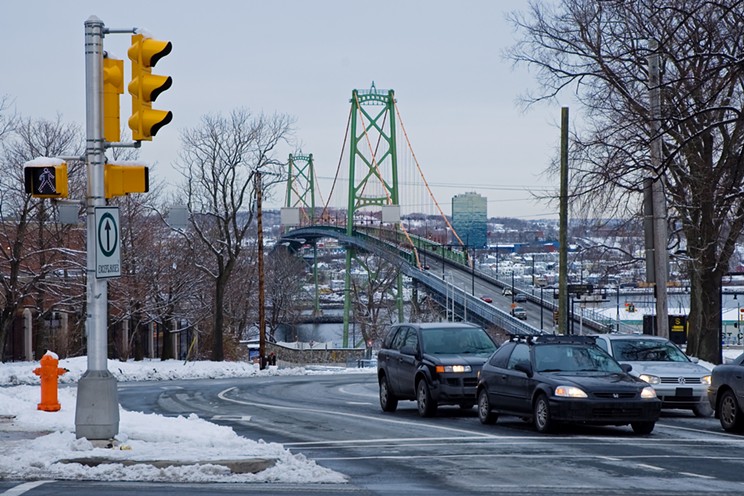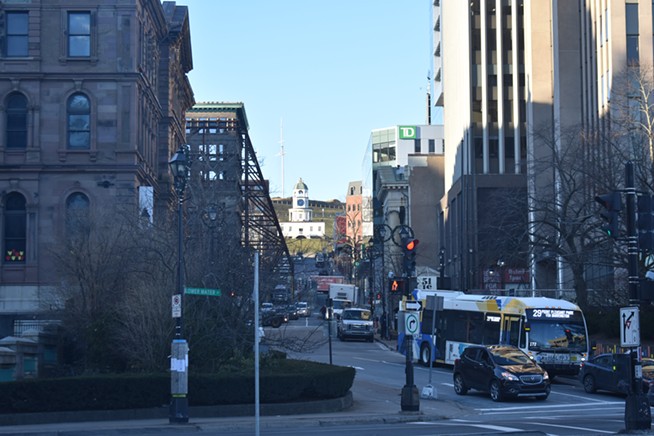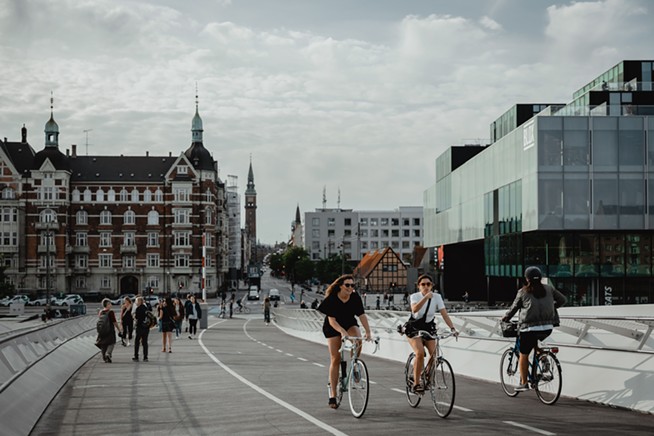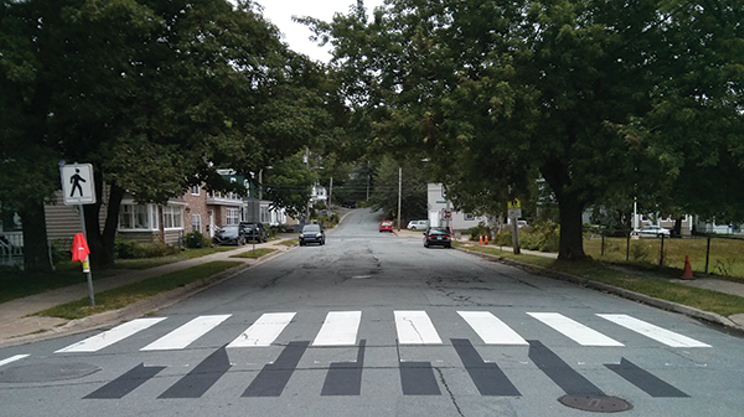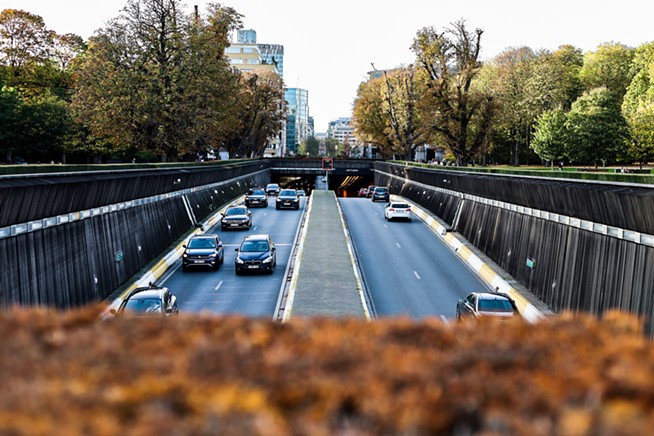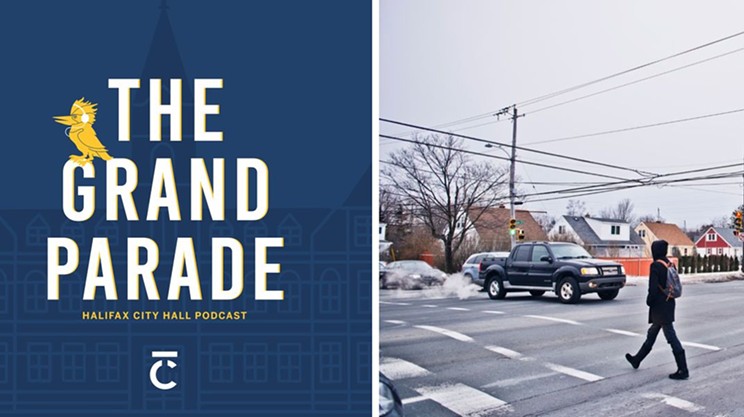“Numbers never lie,” the Mexican-American novelist Luis Alberto Urrea wrote in The Devil’s Highway, “they simply tell different stories depending on the math of the tellers.”
When Halifax premiered its Road Safety Dashboard in 2020, two years into a long-term plan to eliminate traffic-related injuries and deaths on the region’s streets, the intent was not only to gather better road data across the HRM, but also for those numbers to hold regional councillors and staff accountable in their shared goal of safer streets. Thus far, the narrative from Halifax council has been one of “tracking in the right direction” toward its goal of zero road deaths and injuries by 2038.
Both figures are down from 2018 levels. But something curious happens when you look at the raw numbers: The stories they tell begin to split apart. And if you get around Halifax by foot, bicycle or mobility aid instead of a car, the safety picture isn’t getting better at all—according to the HRM’s latest numbers, it’s actually getting worse.
How it started—and how it’s going
It was June 28, 2018 when Halifax’s transportation department set forth its Strategic Road Safety Framework: A 104-page guide to bringing traffic-related deaths and injuries to zero by the year 2038 and, in the short term, to cut both by 15% within five years. That year, cars killed 18 people and injured 749 more across the HRM. On average, the plan noted, Halifax was seeing 14 traffic deaths per year. In January 2018 alone, two pedestrians died—one of whom was hit and killed on a Queen Street sidewalk. Council was ready for change.
“We’re at a place we weren’t years ago,” District 8 councillor Lindell Smith told his colleagues at the June 28 transportation standing committee meeting. “We’re actually discussing implementing a plan that—obviously, we need to do more work to get there—but that’s going to deal with how we look at road safety.” Fellow councillor Waye Mason called it a “good first step,” referencing his envy of pedestrian-friendly cities like Montreal and Copenhagen. Councillor Shawn Cleary wondered why Halifax couldn’t set its sights higher and proposed the target of a 20% reduction in deaths and injuries over the first five years. His colleagues agreed.
The targets fit nicely into Halifax’s recently introduced Integrated Mobility Plan, a roadmap for the “movement of people, rather than vehicles.” It also brought Halifax into the fold of Canadian municipalities adopting ambitious traffic safety goals inspired by “Vision Zero” (the “zero” being zero traffic-related deaths and injuries), from Toronto to Montreal to Vancouver to Saskatoon.
Five years on, the results have been mixed: While last year’s numbers aren’t fully in yet—we’re still waiting on December’s tally—the forecast would put Halifax at four deaths and 722 traffic-related injuries in 2022. On the one hand, that’s 10 more lives saved annually than the average just five years ago. But if you look at road injuries and deaths involving the most vulnerable road users—pedestrians and cyclists—then last year was on track to be the most dangerous of any year since, and including, 2018.
The advocate
The latter numbers worry Martyn Williams, who may well be among the loudest voices calling for pedestrian safety measures in Halifax. Since 2017, he’s written letters and emails, spoken at HRM council meetings and met with regional councillors to lobby for safer Halifax streets. He also tweets—a lot—about the unsafe roads and near-misses with cars that he encounters on his daily walks.
As the creator of the HRM Safe Streets for Everyone Facebook group, Williams oversees a community of nearly 1,600 people who talk about crosswalk safety, close car encounters and Halifax’s transportation priorities. Which isn’t to say that Williams has always fashioned himself a safe-streets advocate. Before moving to Halifax from Bristol, UK, he tells The Coast, “the whole issue of safety didn't really cross my mind.”
It was only after moving to the HRM with his wife—a born-and-raised Nova Scotian—and their kids that he found himself wondering about the gulf between his new and old surroundings. The nearest crosswalk to their Clayton Park apartment, he says, was “a lot more treacherous” than what he’d been used to growing up with in England. Even with the added visibility of overhead flashing lights, he saw his neighbours make regular use of the pilloried orange flags that sit in containers beside many Halifax crosswalks. (If you’re going to be hit by a car driving 60km/h, you might as well be waving a tiny flag while doing it.)
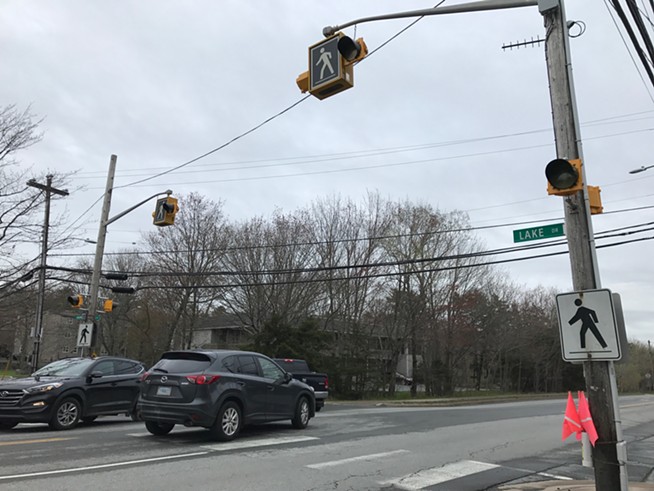
Williams wondered if, in his adopted Atlantic Canadian city, he was alone in his pedestrian paranoia. Maybe it was just the culture shock of adapting to a new country and its car-centric customs. Halifax, after all, had a reputation for its friendly drivers—right? He figured he’d start a Facebook group to see “if there’s anyone out there” who felt similarly. The response, he says, was swift and resounding.
“It was like opening the floodgates.”
Halifax’s traffic-calming measures not enough
Spend half a minute anywhere Haligonians shoot the shit online and you’ll find no shortage of people ready to declare that Halifax’s drivers are the devil incarnate and every other pox under the sun. (The Leafs’ 56-year Stanley Cup drought? I heard it was a Halifax driver.) In fairness, this kind of catastrophizing happens in every city where you find cars and drivers, but in Halifax’s case, there’s some evidence to back it: In 2017, Allstate Canada ranked 93 Canadian cities for the most collision claims per 100 cars. Our fine capital? The worst of all.
It’s the kind of thing that’s easy to laugh off until you’re reminded of what the numbers represent: Last year, 662 Haligonians were injured in car crashes. Some of those injuries were life-altering. Four were fatal. Last week, a man in his 70s was taken to hospital with life-threatening injuries after he was hit crossing Saint Albans Street. In one particularly bad span last December, 11 Halifax pedestrians were hit by cars in 11 days.
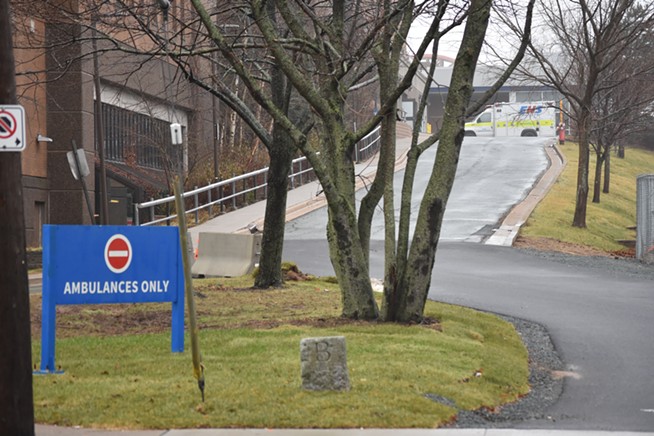
You could make the case—as HRM staff did on Nov. 22 last year—that when it comes to injuries and deaths, Halifax’s road safety numbers are still better than many of our Canadian municipal peers, but it’s a bit like saying Canada’s broken health-care picture is better than the United States’ private model: A turd is a turd, no matter its size.
It takes a fluency in doublespeak to look at the numbers and conclude that Halifax is safer for pedestrians today than it was in 2018. Which isn’t to say that Halifax hasn’t made strides—and indeed, genuine efforts—toward making the region safer: It has. Since 2018, the HRM has added 249 traffic calming installations (think speed bumps, raised crosswalks and curb extensions), 63 leading pedestrian intervals (giving pedestrians a head start at controlled crosswalks) and 23 designated 40km/h neighbourhoods, among other efforts. But those efforts, well-intentioned as they are, pale in comparison to what the region needs, given its population explosion in recent years. Halifax added more than 20,000 people last year. Incremental road safety efforts work if a region’s growth is incremental too, but if the latter outpaces the former, then you’re only losing ground.
Incremental road safety efforts work if a region’s growth is incremental too, but if the latter outpaces the former, then you’re only losing ground.
tweet this
Williams describes Halifax’s road safety approach as “a lot of beating around the bushes,” with council opting for changes that, while perhaps popular with residents, aren’t actually going to make much of a difference in the number of injuries and deaths on the region’s roads. Take neighbourhood traffic calming, for instance. “Everybody hates looking out and seeing a speeding driver outside their house,” he says, speaking by phone with The Coast. And yet, most crashes aren’t happening on quiet streets; they’re happening on busy ones—streets like Quinpool Road, or Herring Cove Road, or Chebucto Road, or Dutch Village Road. “Some of the speed reductions,” he says, speaking of Halifax’s 40km/h neighbourhoods, “you can’t even find a single injury incident affecting anyone on those roads” before the lowered speed limits came into effect.
If he could, Williams would opt for a “simple road space reallocation” for any major arterials and collector roads when Halifax needs to repave them: Shave a lane here, introduce a dedicated bus lane or protected bike lane there. Repeat. That, he feels, would be a more forward-minded approach to solving Halifax’s traffic problems—and one that recognizes the HRM’s aims of shifting from personal cars to public transit and active transportation.
“If we don't,” he says, “and those roads just get resurfaced, and they're still four or five lanes of all traffic, it’s going to be a waste of an opportunity. And it won’t at all change the level of danger.”
‘Huge amount of potential’ for safer streets, but provincial barriers remain
Williams isn’t the only one who wishes Halifax would aim higher in its reimagined road network. Sara Kirk, scientific director of the Healthy Populations Institute at Dalhousie University, would like to see Halifax consider reducing speed limits across the board—not just in pocket neighbourhoods. Brussels, Belgium, she tells The Coast, dropped its speed limit to 30km/h on almost all of its roads in 2021, and the results were drastic: In just three months, the Belgian capital saw a 22% year-over-year drop in traffic collisions.
The case for 30km/h streets is a matter of physics: When things collide—and when you’re one of those things caught up in that collision—you’re more likely to die from impact at higher speeds. That’s why a bullet fired from a gun is deadlier than one tossed across the room. And when it comes to car collisions, the math is pretty clear: If you’re a pedestrian hit by a car, your risk of dying is five times higher at 50 km/h than it is at 30 km/h. And if you’re in a car, your risk of being killed or seriously injured is 15% at 30 km/h compared with 45% at 50 km/h.
We all know this, but choose to ignore it we’re when behind our steering wheels because we want to reach our destinations faster. And if it means blowing through a red light and swearing it was amber, well, who’s to say it wasn’t? But just as noteworthy in Brussels’ case, the city’s mobility minister announced in May of 2018, was that its bold changes resulted in “identical or even slightly shorter” commutes for its residents.
That stuck with Kirk.
“It kind of blows out of the water this idea that we’ve got to keep cars moving, because that's the priority—because actually, you get there just as fast,” she says.
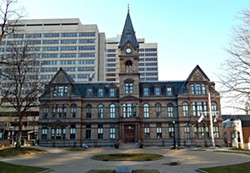
Here’s the kicker: Halifax wants to lower its speed limits. For more than five years, HRM council has talked about its desire for 40km/h speed limits on all residential roads. But—as Coast reporter Matt Stickland has pointed out before—the region can’t do much about lowering its speed limits without the province’s say-so.
As far back as 2018, when Halifax was introducing its Strategic Road Safety Framework, councillor Mason asked his colleagues why they couldn’t just “frig the province” and build roads that—even if signed for 50km/h—would be engineered to force drivers into slowing down.
“Just because the province is so hide-bound that they won’t let us do a speed limit of 40km/h doesn’t mean we can’t set the maximum target design speed for all of our residential roads to 40km/h… and just do that,” he said at the June 28, 2018 transportation standing committee meeting.
Five years later, and the province still pulls the strings. But last November, council resolved for mayor Mike Savage to write a letter to Nova Scotia’s minister of public works asking for the HRM Traffic Authority to… well, have some authority in setting its own speed limits. Will the minister agree?
Forget ‘war on cars,’ Kirk says
Halifax still has 15 years to reach its target of zero traffic-related deaths and injuries. Before then, Kirk hopes the issues of road safety—and which road users Halifax should prioritize—will shed their polarizing baggage.
“Whenever safe street advocates ask for space to be reallocated to people moving around outside of a car,” she says, “we get this narrative of, ‘Oh, this is a war on cars.’ We use these military analogies—but they're not helpful, because we're all actually on the same side.
“Everyone wants a livable planet. Doesn't everybody want clean air, safe spaces for children to play, spaces that are accessible for people? We can have all of these things, even if we do take space away from cars, because it's been demonstrated over and over again, the cities that support active transportation are safer for everyone, including people who are driving.”

